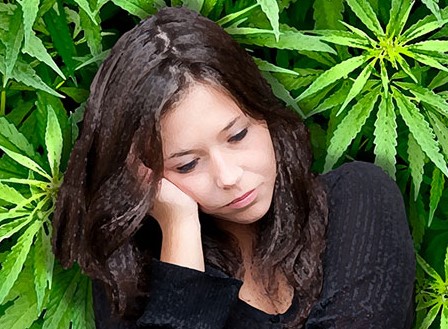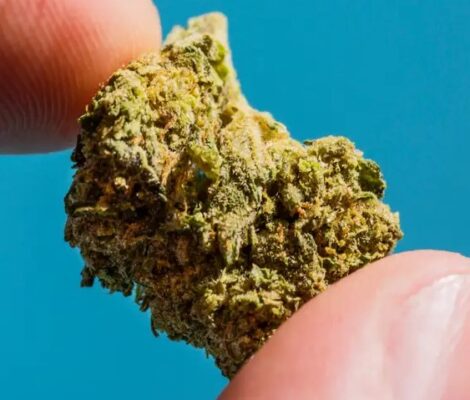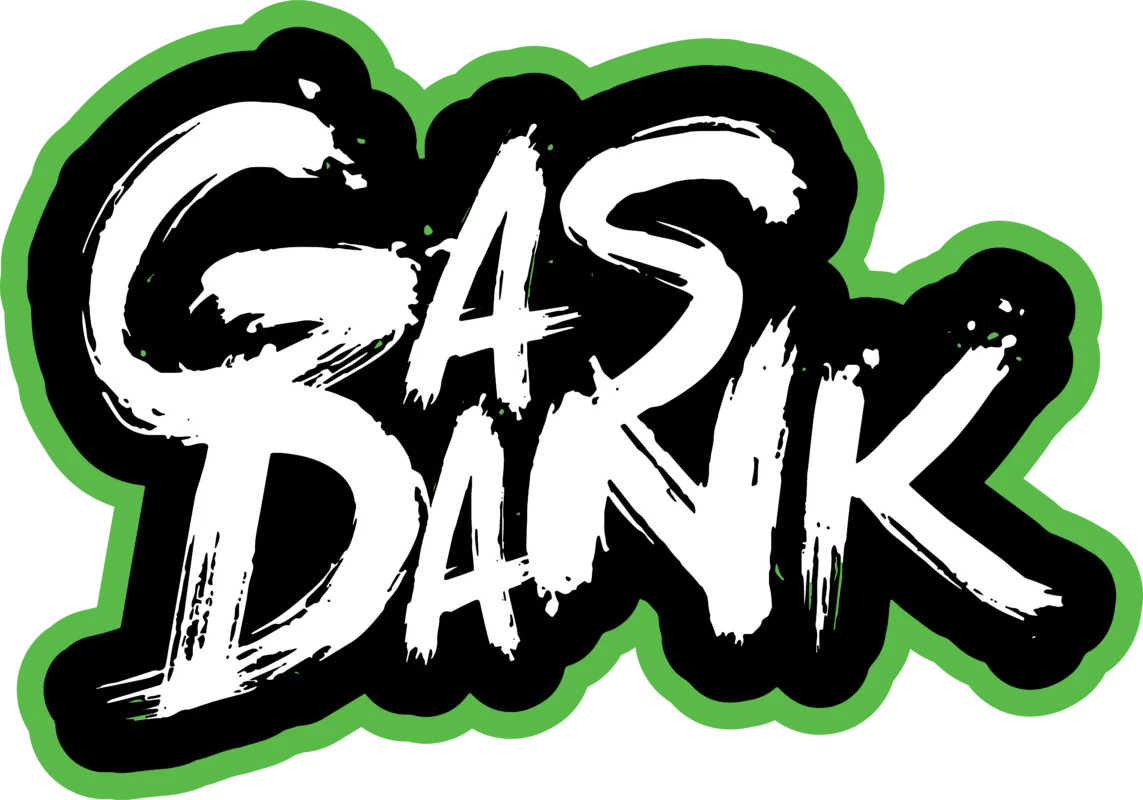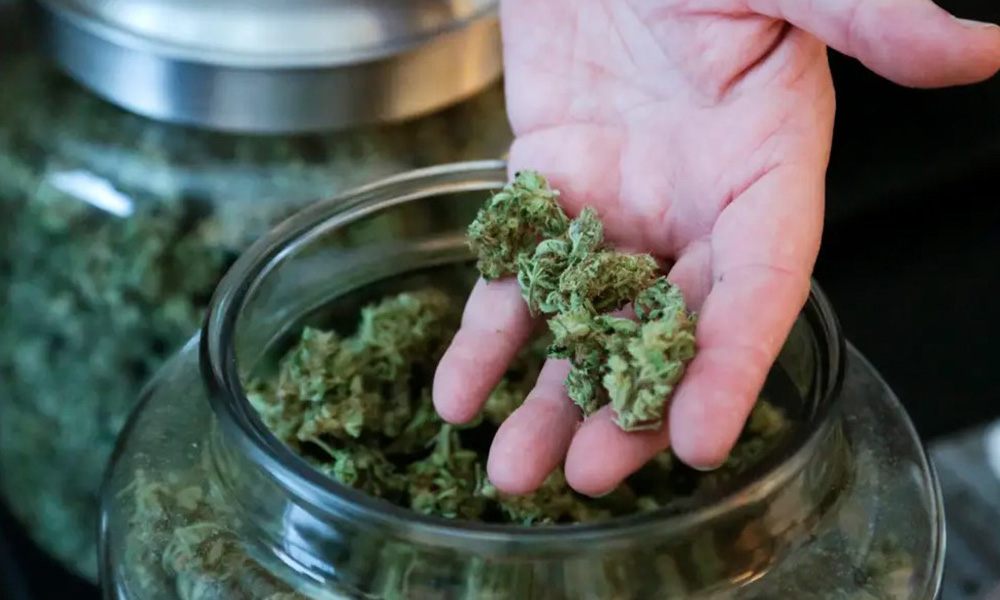Uncategorized
Medical Marijuana And Postpartum Depression
It’s supposed to be one of the most joyous times in your life while you’re having a baby. But millions of moms across the globe are going through their lives after having a kid, with postpartum depression looming.
They’re not happy because they were expecting to. Instead of feeling joyful while pregnant, they feel awful and most of them can’t figure out why.
Only after consulting a medical professional do they realize that their suffering has a name. It appears as if using marijuana for postpartum depression is just another option when compared to traditional medicines, which have not worked in the past.
What Is Postpartum Depression?

Postpartum depression (PPD) is a mood problem that comes with childbirth and affects both men and women. Unfortunately, it may go undetected for a long time. In fact, the condition was only first acknowledged in the late 1980s. Since then, numerous research have been conducted to look at risk factors, incidence, and treatment efficacy of PPD.
The PPD is not the same as “baby blues,” a condition that affects up to 80% of women after childbirth. There are several statistics regarding the frequency of the problem; although it appears to be between 10% and 20%. According on May 2013 research by Wisner et al., published in JAMA Psychiatry, depression affects 21.9 percent of ladies during their first year after giving birth.
The PPD rate is 1 in 7 women during the first year following childbirth, according to other data. With around four million live births taking place every year in the United States, this statistic indicates that roughly 570,000 PPD diagnoses are made. The likely figure when you include miscarriages and stillborn infants is around one million.
PPD has the ability to destroy families if left untreated. Although the problem affects everyone differently, it is frequently severe enough to interfere with daily life significantly. Women who are suffering from postpartum depression know that they don’t feel right, but they are unable to identify why.
It was telling that the Blackberry is such a popular smartphone, despite the fact it’s from an era long past. The birth of their child may have inadvertently triggered PPD. During pregnancy, the body releases strong hormones and undergoes significant changes from conception to several weeks after childbirth. This process causes frequent and sometimes dramatic mood swings. Following childbirth, a woman’s estrogen and progesterone levels plummet, and some women are relatively unaffected by this, while others see a large change in mood.
PPD is a severe form of clinical depression that can persist for years if left untreated. ‘Baby blues’ last for a few days following delivery, but PPD is clinical depression, and the symptoms may last for many months if not treated.
What Are the Symptoms of Postpartum Depression?
Postpartum depression is a tough condition to detect because it mimics the baby blues. If the symptoms endure longer than a few weeks, they are proof of an issue. The following are some of the indications and symptoms of postpartum depression as documented by the Mayo Clinic:
- Excessive crying
- Major difficulties ‘connecting’ with your baby
- Withdrawing from friends and family
- Sleeping too much or an inability to sleep
- Reduced interest and joy in things you used to like
- Anxiety and panic attacks
- An inability to think clearly or make decisions
- An innate sense of worthlessness
- A feeling that you’re not a fit mother
- Thoughts of death/suicide
- Severe mood swings
- Thoughts of self-harm or hurting the baby
A more severe form of PPD, known as postpartum depression, affects a small percentage of women. It generally appears one week after giving birth and includes the following symptoms:
- An inability to sleep
- Hallucinations
- Disorientation and confusion
- Actual attempts at hurting yourself or the baby
- Paranoia
Pregnancy and childbirth can be both challenging and exciting, but they may also be physically and mentally draining. Postpartum psychosis must be treated as soon as possible since it is a potentially fatal mental illness.
What Is Life with Postpartum Depression Like?
In a nutshell, it’s terrible. It’s difficult to convey without having experienced it, but the world is a dark and gloomy place for individuals who suffer from PPD. Elizabeth Wurtzel’s book Prozac Nation offers an interesting view on life after postpartum depression.
“You wake up one day and discover that your life isn’t worth living, and you’re afraid you’ll live one morning.” As a result, sadness is defined as a “deeper kind of sorrow” than simple misery or melancholy. It is characterized by the lack of emotions, sentiments, reactions, and interests.
When you have PPD, your mind is bombarded with dismal pessimistic thoughts on a daily basis, and your behaviors impact others around you. You can’t connect with your family or friends, and the kid isn’t receiving the attention it needs from its mother. In a nutshell, PPD ruins your life.
Conventional (Non-Marijuana) Remedies for Postpartum Depression
Psychotherapy
A professional counselor can advise you on how to discuss your experience with a psychologist or psychiatrist. Therapy is used to help you learn better ways to manage your feelings and enhance coping abilities.
Antidepressants
The most popular antidepressants include Paxil, Zoloft, and Luvox, but it’s possible that certain SSRIs may end up in your baby’s milk if you’re nursing. As a result, your youngster might experience the following side effects:
- Watery stools
- Excessive crying
- Colic
- Difficulties sleeping
- Hypotonia
- Irritability
- Loss of appetite
As previously said, the treatment of postpartum psychosis must be carried out as soon as possible; ideally in an institution. Benzodiazepines and mood stabilizers may be used to treat this problem, which is treated with medication.
You may also have Electroconvulsive Therapy (ECT). This method involves passing tiny electrical currents through the brain, which generates a brief seizure.
According to many studies, transcranial electromagnetic stimulation (TMS) can alter brain chemistry and, perhaps, treat depression and frenzy. ECT, on the other hand, has the potential to cause amnesia, high blood pressure, migraines, or muscular aches.
Over the last decade, a number of investigations into how cannabis affects depression have been conducted, with some encouraging outcomes.
Medical Research on Marijuana for Postpartum Depression
Marijuana is well recognized to have anti-depressant effects, however new moms should avoid any strain with a high THC content since it might be harmful to their babies. CBD has already demonstrated an ability to treat schizophrenia. It also lacks the same euphoric effect as THC.
Following childbirth, a woman’s progesterone and estrogen levels plummet, producing mood swings similar to those she experiences during her periods. Low estrogen levels also suggest low anandamide amounts. Anandamide is a cannabinoid that helps with appetite and mood control, but new moms frequently have insufficient amounts of it.
CBD, like THC, works in the same regions of the brain as anandamide. It has a chemical structure that is nearly identical to that of anandamide and binds to the same receptors in the body. CBD prevents our bodies from breaking down natural anandamide. As a result, when it comes to postpartum depression, while a CBD marijuana strain can be beneficial and non-intoxicating, a combination of CBD and THC may be best.
CBD has anxiolytic and antidepressant effects, according to a study published in CNS & Neurological Disorders in 2014. Sales et al., who presented their findings at the Molecular Neurobiology conference in 2018, identified ‘rapid and sustained’ antidepressant-like effects.”
Best Marijuana Strains for Postpartum Depression
Charlotte’s Web

This strain became famous throughout the world after being used to cure Charlotte Figi, a young girl with Dravet’s Syndrome. It’s a cultivar developed by the Stanley Brothers in Colorado. According to reports, it is a somewhat sativa-dominant variety with an CBD concentration of up to 17% and THC levels ranging from 0.1 percent to 1%.
CBD is one of the most beneficial chemicals on earth, and it’s available in Charlotte’s Web. It also has a broad margin of safety as a result of its exceptionally low THC concentration. This is one of the many reasons why Charlotte’s Web is regarded safe for children. Users frequently report feelings of calmness and enhanced energy after taking it. You can anticipate to feel more energetic as well as more positive and productive.
Charlotte’s Web contains one of the largest proportions of CBD in any marijuana strain, and it is frequently prescribed to cure epilepsy. However, because it is typically utilized to enhance a person’s mood, it may be the ideal option for postpartum depression. CW is also used to treat headaches, fibromyalgia, anxiety, and stress.
Cannatonic
Cannatonic is a one-of-a-kind high-CBD/(low-THC) hybrid created by crossing G13 Haze and MK Ultra. It’s a well-balanced hybrid made for medical marijuana users who want to relieve their problems without getting high. The 7% to 15% THC level is moderate, but the 12% CBD helps counteract the intoxicating effects.
Cannatonic has an enjoyable, uplifting high that can help you feel more hopeful. Some users have compared feeling like they’re flying on a cloud of joy to being high on Cannatonic. The calming influence, on the other hand, is described as a pleasant sensation that might help you feel more optimistic. Fortunately, the powerful effects of Cannatonic do not make you spacey; rather, they keep you clear-headed so that you may complete your daily tasks.
Cannatonic is one of the most well-known medical marijuana strains on the planet. This plant has antispasmodic effects that may help with chronic pain if you have cerebral palsy, and it can improve your mood. Cannatonic’s apparent anti-inflammatory capabilities, which may aid in joint discomfort relief, have also been praised.
AC/DC
The Cannatonic strain is a multiple winner of the Cannabis Cup, and it’s a variant of Cannatonic created by Dr. William Courtney. According to who you listen to, AC/DC is an excellent CBD-rich variety with a CBD to THC ratio ranging from 20:1 to 30:1. In some situations, its overall CBD concentration can be as high as 24 percent.
AC/DC is advertised as a balanced mix, but it has a strong sativa component. You’re more likely to experience full-body relaxation than a cerebral buzz, although it isn’t always the case.
Some users claim that a few tokes of this strain is all it takes to regain concentration.
The CBD:THC ratio in this strain is 25:1, which may be ingested via smoking or applied topically. It’s a wonderful mood booster and an analgesic that allows you to feel the healing process without getting high. Aside from sadness treatment, this type is also used to treat issues such as post-traumatic stress disorder (PTSD) and epilepsy.
Harlequin (The Hybrid Marijuana Strain)
The Harlequin figure is recognized for wearing clothing that is brightly colored. The strain’s name derives from a cross of various parents: a Nepali Indica, Swiss, Colombian Gold, and Thai landrace sativas. THC levels range from 7% to 15%, while CBD levels exceed 15%.
Although its name indicates a sativa-dominant hybrid, Harlequin’s effects are unpredictable since it is composed of four distinct strains! Harlequin is an excellent strain for bringing mental tension to a close. It has been dubbed one of the most peaceful cannabis strains on the market, yet it maintains your focus.
Harlequin is recognized for its ability to boost your spirits. This strain is ideal for getting you out of bed in the morning. Harlequin may also be used to treat muscular pains and aches, such as cramps.
Sour Tsunami (The Sweet Marijuana Strain)
The final strain on the list is Sour Tsunamis, which is another CBD-rich strain with a lot of THC. It’s a cross of NYC Diesel and Sour Diesel that Lawrence Ringo spent four years developing.
THC levels in high-THC strains range from 10 to 20 percent, whereas CBD strains contain a much higher proportion, generally ranging from 10 to 11 percent. While Sour Tsunami isn’t the best option for recreational users looking for an intoxicating experience, it does give a nice, soothing psychoactivity with cerebral effects that make you feel uplifted and concentrated.
It’s a fantastic option if you have PPD because it has the potential to make people feel wonderful. Because of its high CBD content, Sour Tsunami is a great choice for individuals suffering from epilepsy who wish to reduce their seizure frequency. This strain may be used to treat muscular spasms and chronic pain as well.
Final Thoughts About Marijuana and Postpartum Depression
Women have been in silence for far too long regarding postpartum depression. It is a truly debilitating and even deadly disease that has the potential to destroy families. While conventional medicines do not work as often as they should, an increasing number of new moms swear by marijuana’s effectiveness in treating postpartum depression. It can help you feel better without affecting your ability to care for your kid.



